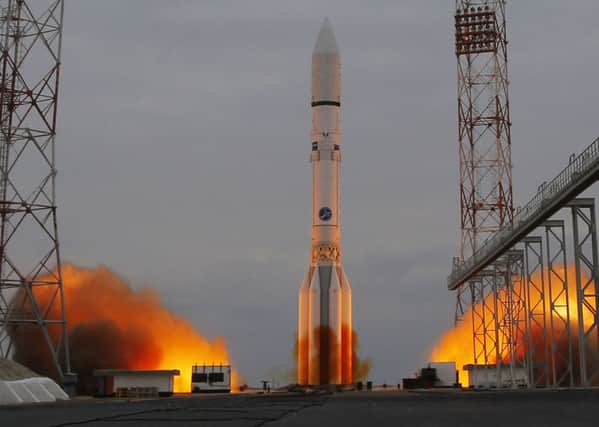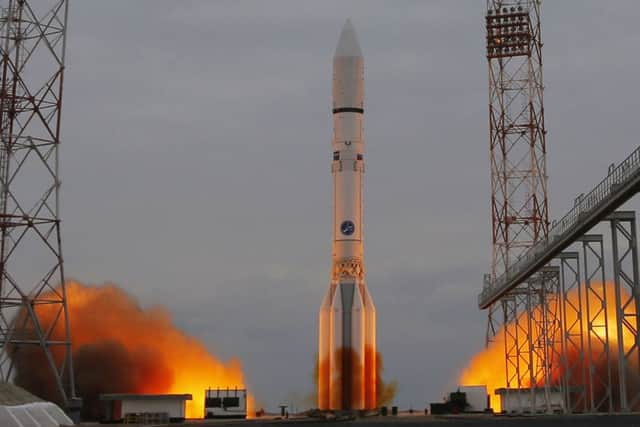A 300 million-mile mission to discover if there is life on Mars


Europe’s greatest interplanetary adventure, the search for life on Mars, has taken off with the launch of a spacecraft programmed to sniff out methane around the Red Planet.
A Russian heavy-lift Proton rocket carrying the Trace Gas Orbiter (TGO) blasted off from the Baikonur Cosmodrome, Kazakhstan, at 9.31am UK time today and scientists are tonight awaiting a signal telling them the spacecraft has safely set off on its seven-month 300 million-mile journey to reach Mars.
Advertisement
Hide AdAdvertisement
Hide AdProfessor Mark McCaughrean, senior science adviser at the European Space Agency (ESA) said: “With the Trace Gas Orbiter we’re going to go and study where the methane’s coming from, study whether it’s seasonal, study the geographical locations. And maybe, maybe, we can find out whether there is life, extant, on the Red Planet today.”


Housed in the rocket’s upper stage was a robot lander, Schiaparelli, which is due to parachute down onto a Martian plain in October.
ExoMars 2016 is the first phase of an historic £924m joint European-Russian mission to search for biochemical “fingerprints” of past or present life high above Mars and on its surface.
TGO is equipped with ultra-sensitive instruments for detecting trace gases in the Martian atmosphere, including methane which can be a sign of life. On Earth, the gas is chiefly generated by billions of bacteria, many of which live in the guts of animals such as cows and termites. But it can also be released by volcanic activity and other geological processes.
Advertisement
Hide AdAdvertisement
Hide AdThe ESA orbiter will tell scientists whether Martian methane is most likely to have a geological or biological source.


Discovering a likely source of biological methane on Mars would be a dramatic curtain-raiser for the ExoMars 2018 rover mission.
The six-wheeled rover, built by Airbus Defence and Space in Stevenage, will analyse samples drilled from the Martian soil for biochemical signatures of life, either left by long-dead microbes or organisms still thriving beneath the planet’s radiation-baked surface.
Schiaparelli will pave the way for the rover mission by testing its Russian-designed descent and landing system, which involves aerobraking, parachute deployment, and retro rockets.
Advertisement
Hide AdAdvertisement
Hide AdTGO and Schiaparelli are due to reach Mars on October 19, but will separate from each other three days earlier.
As TGO begins orbiting the planet, Schiaparelli, travelling at 13,000mph, will enter the atmosphere and land close to the equator. Scientists will have to wait a whole year for TGO to finish making orbital adjustments in preparation for its part in the mission.
From January 2017 to December the probe will use friction with the atmosphere to “aerobrake” and lower itself to an altitude of 250 miles. Only then can its science operations begin.
Dr Manish Patel, from the Open University, in charge of TGO’s ozone-mapping ultraviolet spectrometer instrument, watched today’s launch but said: “I won’t be celebrating till we get final separation and the signal from the spacecraft telling us its on its way.”